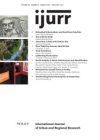The focus of this article is on the role of the transnational capitalist class (TCC) in and around architecture in the production and marketing of iconic buildings and spaces, in global or world cities. The TCC is conceptualized in terms of four fractions: (1) Those who own and/or and control the major transnational corporations and their local affiliates (corporate fraction). In architecture these are the major architectural, architecture‐engineering and architecture‐developer‐real estate firms. In comparison with the major global consumer goods, energy and financial corporations the revenues of the biggest firms in the architecture industry are quite small. However, their importance for the built environment and their cultural importance, especially in cities, far outweighs their relative lack of financial and corporate muscle. (2) Globalizing politicians and bureaucrats (state fraction). These are the politicians and bureaucrats at all levels of administrative power and responsibility who actually decide what gets built where, and how changes to the built environment are regulated. (3) Globalizing professionals (technical fraction). The members of this fraction range from the leading technicians centrally involved in the structural features of new building to those responsible for the education of students and the public in architecture. (4) Merchants and media (consumerist fraction). These are the people who are responsible for the marketing of architecture in all its manifestations. (There is obviously some overlap between the membership of these fractions.). My conclusion is that many global and aspiring global cities have looked to iconic architecture as a prime strategy of urban intervention, often in the context of rehabilitation of depressed areas. The attempt to identify the agents most responsible for this transformation, namely the TCC, and to explain how they operate, suggests that deliberately iconic architecture is becoming a global phenomenon, specifically a central urban manifestation of the culture‐ideology of consumerism. L’article porte sur la classe capitaliste transnationale (TCC) au sein et à la périphérie de l’architecture, et sur son rôle dans la production et la commercialisation de constructions et espaces iconiques dans les villes mondiales ou planétaires. Cette classe se conceptualise en quatre fractions: (1) Ceux qui détiennent et/ou contrôlent les principaux groupes transnationaux et leurs sociétés affiliées locales (fraction économique): En architecture, il existe de grands cabinets d’architecture, d’ingénierie en architecture et d’architectes promoteurs immobiliers. Par rapport aux grosses sociétés multinationales de la finance, de l’énergie ou des biens de consommation, les recettes des plus importants cabinets sont assez faibles; pourtant, leur place dans l’environnement construit et la culture, notamment en milieu urbain, compensent largement leur impact relativement mince sur le plan financier et économique. (2) Les acteurs politiques et bureaucratiques de la mondialisation (fraction étatique): Il s’agit des politicients et bureaucrates à tous les niveaux de responsabilié et de pouvoir administratifs qui décident effectivement de ce qui est construit et où, ainsi que de la régulation des changements apportés à l’environnement construit. (3) Les acteurs professionnels de la mondialisation (fraction technique): Leur diversité va des techniciens de renom, surtout impliqués dans les caractéristiques structurelles des nouveaux bâtiments, à ceux qui sont chargés d’enseigner l’architecture aux étudiants et d’éduquer le public. (4) Marchands et médias (fraction consumériste): Ce sont les personnes responsables de la commercialisation de l’architecture dans toutes ses manifestations. Ces quatre fractions présentent bien sûr des intersections. On peut déduire que bon nombre de villes planétaires — ou aspirant à le devenir — ont opté pour une architecture iconique comme première stratégie d’intervention urbaine, souvent dans un contexte de réhabilitation de zones en déclin. Identifier les principaux agents responsables de cette transformation (la TCC) et expliquer leur mode de fonctionnement conduit à suggérer qu’une architecture délibérément iconique devient un phénomène mondial, plus précisément une manifestation urbaine essentielle de l’idéologie‐culture du consumérisme.
Details
Written by:
LESLIE SKLAIR
Digital Object Identifier (DOI)
10.1111/j.1468-2427.2005.00601.x
About DOI
Read full article as PDF
Read full article as HTML
See the references for this article
